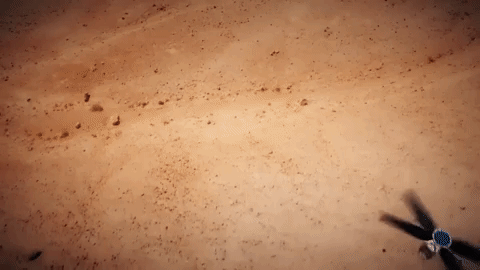- Pronouns
- he/him
- TNP Nation
- El_Fiji_Grande
- Discord
- El Fiji Grande (#3446)

Overview:
As you may have heard, NASA plans to send a helicopter to Mars to aid the Mars 2020 Rover complete its exploration goals. The helicopter will provide aerial reconnaissance to find areas of interest and provide assistance avoiding obstacles for the rover. This means that the rover will be able to identify sites it should explore in closer detail much more quickly, and will allow the rover to move much farther continuously without having to stop to thoroughly reevaluate its surroundings. So, while the Mars helicopter certainly is very cool, will capture the public eye and help NASA and JPL build public relations and interest in space, it will also have a very important mission objective. While the helicopter sent with the 2020 rover will be a technology demonstration, it's possible that someday fleets of aerial vehicles could provide high-resolution ground reconnaissance all over Mars.
Specs:
Range: 500-600 meters
Speed: 500 meters/minute
Flight time: ~1-2 minutes/flight
Mass: 4 lbs
Max altitude: 30 meters
Motor RPM: 2500
Blade diameter and material: 1.2 meters carbon fiber
Technical Challenges:
The Martian surface presents numerous technical challenges the helicopter must overcome. First and foremost, the atmosphere is about 1/100th as dense as the atmosphere here on Earth. As a result, the helicopter must be extremely light, have long blades, and have a motor capable of spinning the blades at thousands of rotations per minute (rpm). A good analogy for the atmospheric density problem is that this will be like flying a 4lb helicopter at 100,000 feet - over 3x higher than commercial planes fly. The thermal environment is also challenging, in that the helicopter must survive the Martian night, which regularly drops to 90 K (~-297F). The biggest concern is to keep the electronics and batteries alive and well. These components have minimum operational and survival temperatures that must be maintained throughout the night. Furthermore, the helicopter must be entirely energy-independent once it separates from the rover. It must provide enough energy to power heaters throughout the night and to power the motors during flight. The motors consume about 1/2 KW during flight, which means that the wiring must also be quite thick. Additionally, the helicopter must be flown autonomously, because the time to send a signal to mission control on Earth and back to the helicopter is about 14x the length of the entire flight. This means it must take off quickly enough to avoid dust, maneuver in the air, take photographs, communicate with the rover, select a suitable landing site, and touch down - all on its own.
Because the motors spin the helicopter's blades so fast, if both blades were to spin in the same direction, this would incur a torque on the vehicle sufficient to make it lose control in the air. As such, the blades will be counter-rotating to mitigate this problem. For navigation, the blades will change their pitch will rotating, providing attitude control, which allows the drone to maneuver in the air.
The landing legs must be sufficiently far apart such that the helicopter does not fall over when landing. They must also provide clearance of rocks and other obstacles, and be capable of providing stability even on slight inclines. Some crosswinds may be expected during landing. The legs must also be designed not t dig into the Martian regolith, as doing so might cause it to get stuck or throw up too much dust when lifting off.
Last edited:

